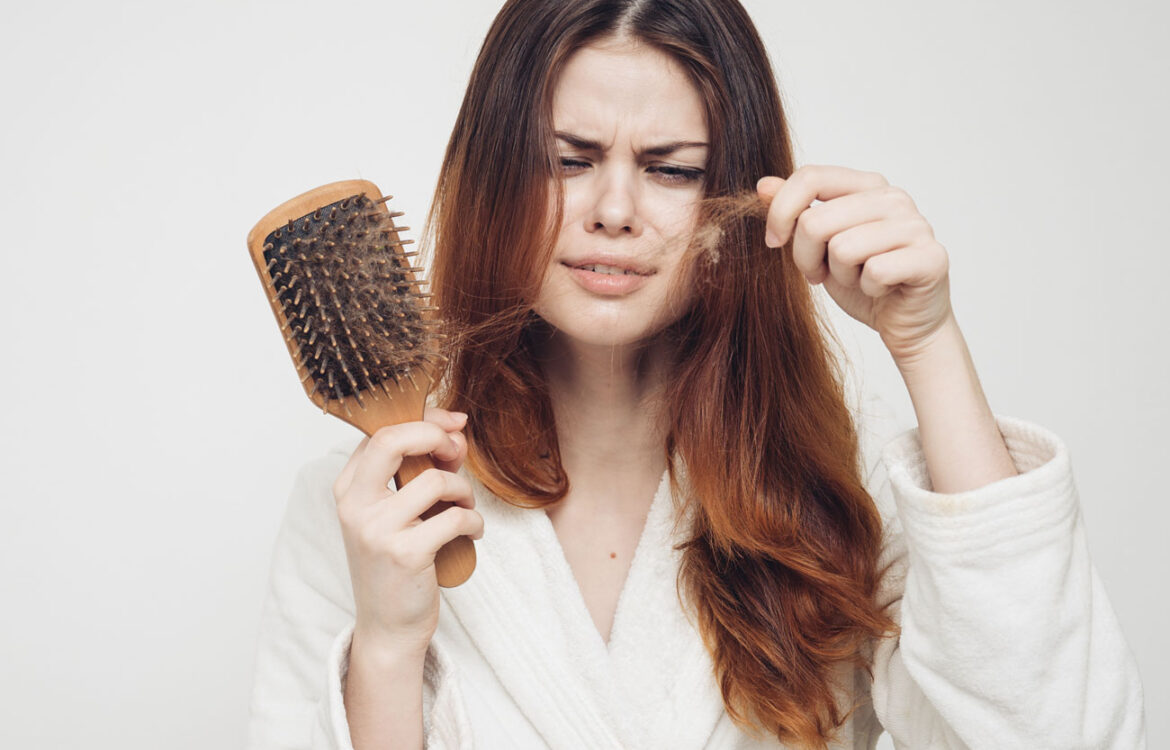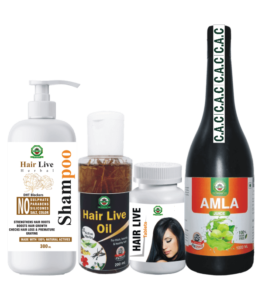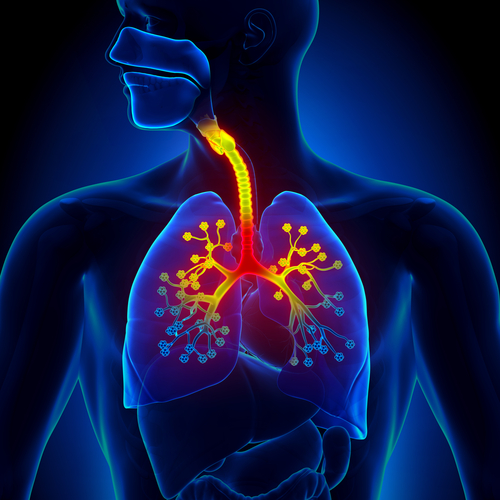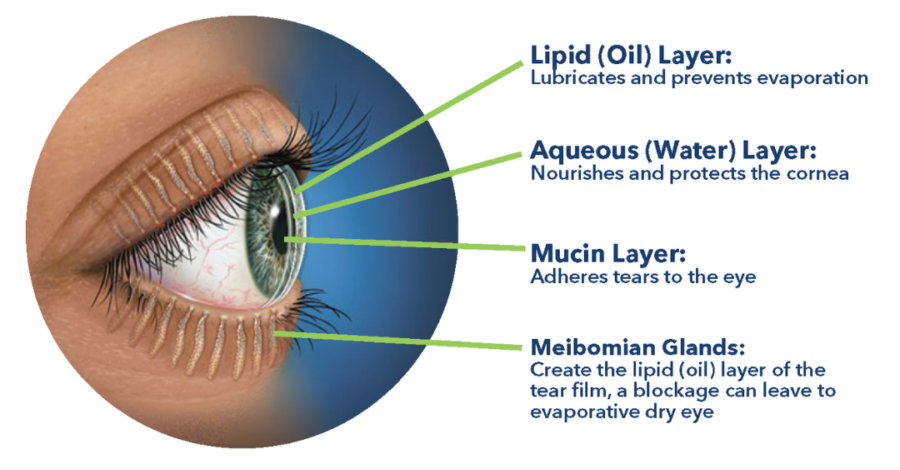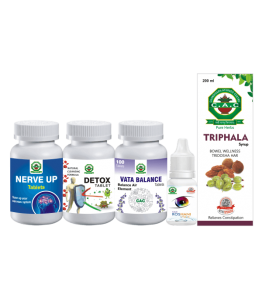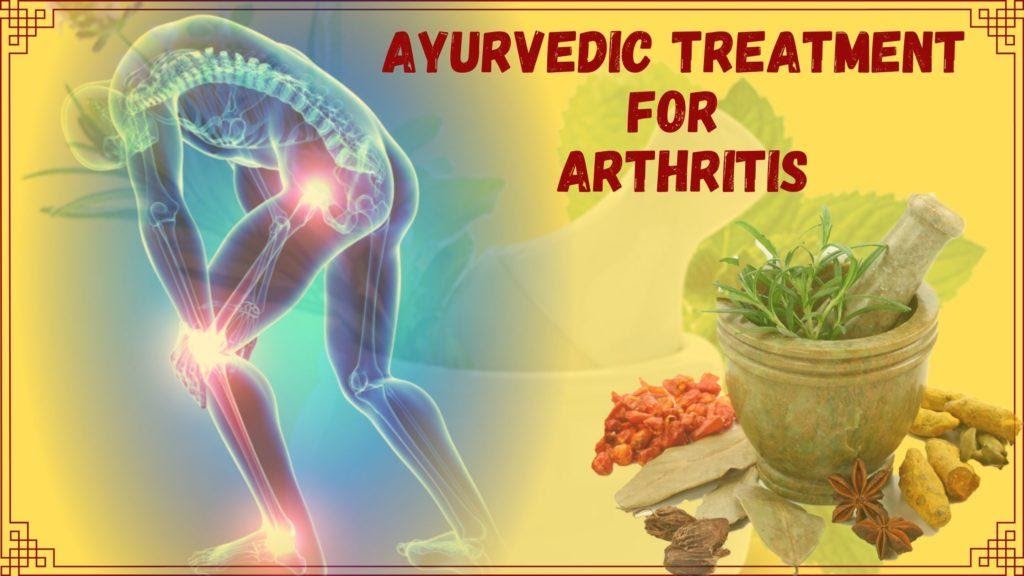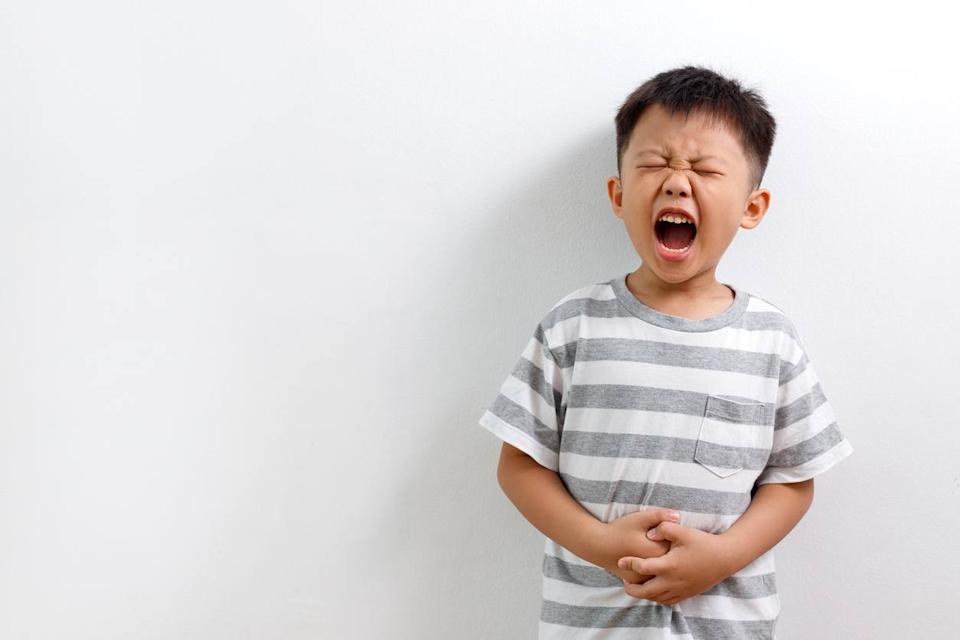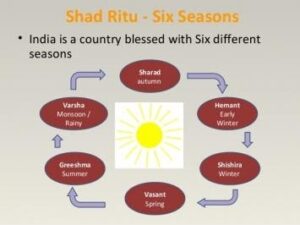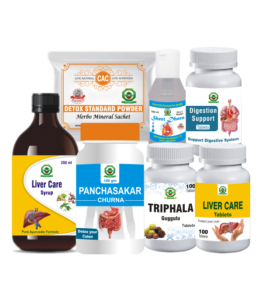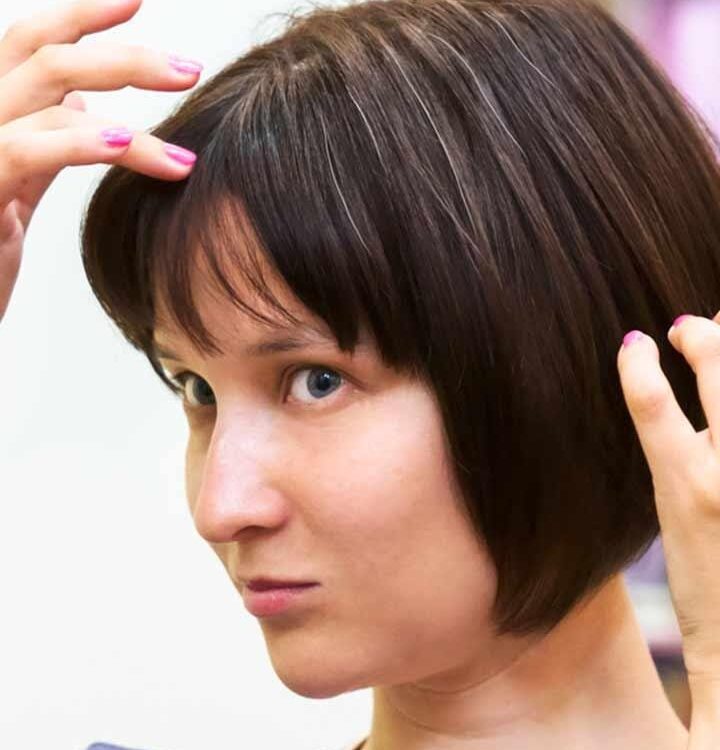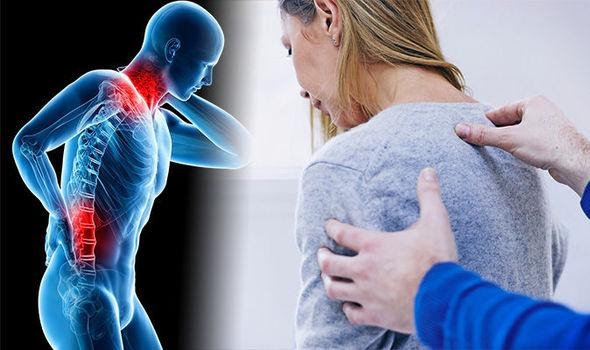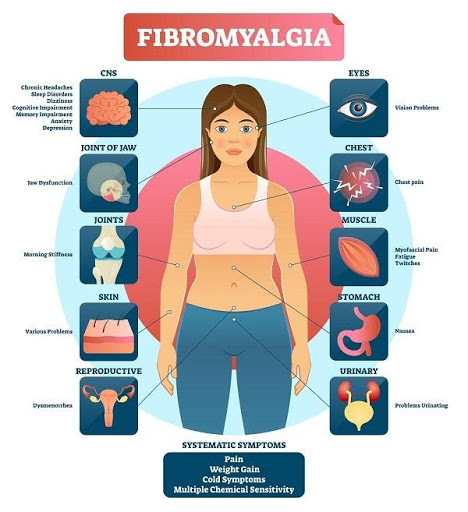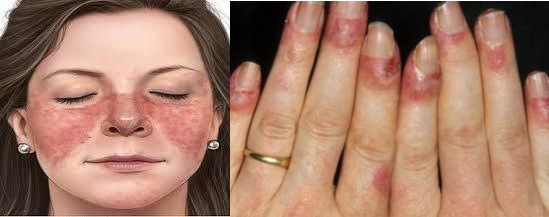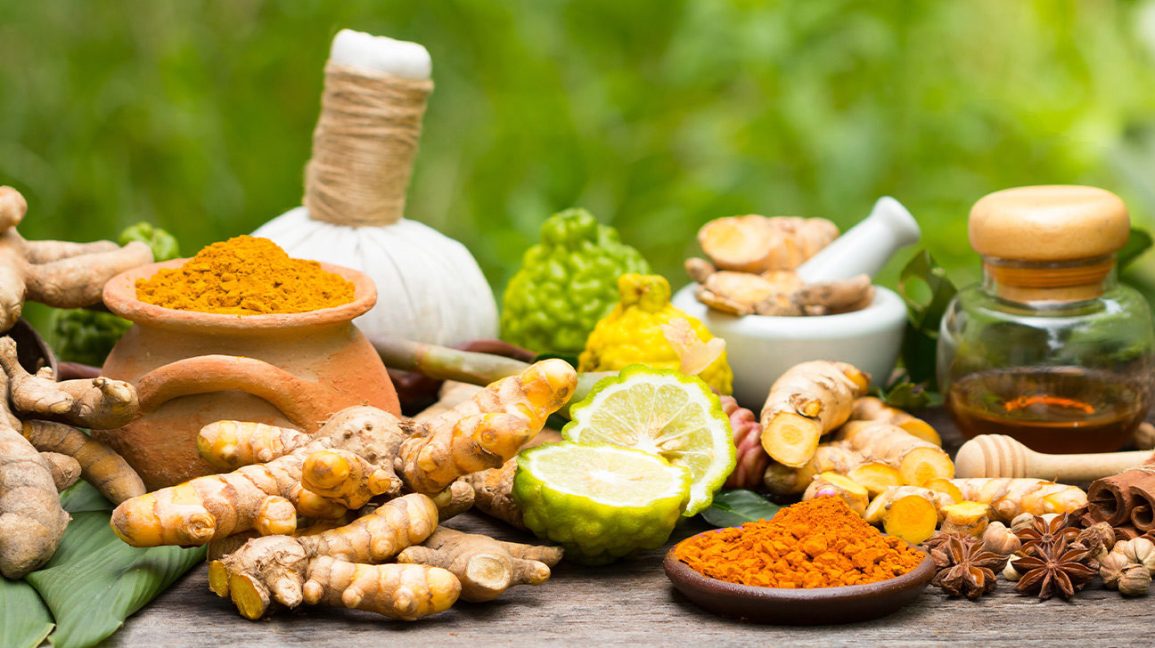Author Archives: Dr. Vaidya Karanvir Singh
Best Ayurvedic Treatment for Hair Loss
- June 28, 2021
- Posted by Dr. Vaidya Karanvir Singh
- 0 Comment(s)
Hair shedding is part of a day to day life — some hairs fall out while others grow in. This is natural process by which balance is maintained . When this balance is interrupted that is when hair fall occur is more and growth of hairs become less — hair loss happens. Hair loss is different than hair shedding. In medical term hair loss is known as “alopecia.”
Hair loss (alopecia) can affect scalp or entire body, and it can be temporary or permanent.
SYMPTOMS –
Hair loss can appear in many different ways, depending upon the causative factor . Symptoms can show sudden or gradual effect and affect just your scalp or your whole body.
Signs and symptoms may include–
- Gradual thinning on top of head– This type of hair loss is affecting the people with age and is the most common type of hair fall.
- Patchy bald spots – In this skin may become itchy and painfull.
- Sudden loosening of hair – A physical or emotional shock can cause hair to loosen.
- Full-body hair loss – Some medical conditions and medical treatments, such as chemotherapy for cancer, can result in the loss of hair all over your body.
CAUSES OF HAIR LOSS –
Hair loss may occur due to following factors-
- Hereditary factors – Most common cause of hair loss in women and men affecting with age.
- Hormonal changes and medical conditions – Lot of conditions in which hormonal changes occur can lead to hair loss. For eg. in PCOS , during pregnancy in women. It is also seen in medical conditions like in autoimmune disorders, Thyroid etc.
- Medications -It can occur as a side effect of certain medications , such as those used for cancer, arthritis, depression, heart problems, gout and high blood pressure.
- Chemotherapy also causes hair lose
- Stress-This can also happen after a stressful time in your life, such as a divorce or death of a loved one.
- Hairstyles and treatments. Excessive hairstyles that pull your hair tight cause friction can lead to a type of hair loss called traction alopecia. If scarring occurs, hair loss is of permanent type.
- Age – With age, most people notice some hair loss because hair growth slows down and hair also starts to lose its color.
TREATMENT –
Treatment of hair loss depend upon the underlying cause. Treatments for some types of hair loss are-
- Medications – Minoxidil, Finasteride, spironolactone and oral dutasteride . These have effective results to restore hair growth.
- Hair transplantation
- Laser therapy
AYURVEDIC CONCEPT OF HAIR LOSS
The Ayurvedic Science is based on the concept of keeping the tridoshas in balance. According to Ayurveda, hair fall occurs when there is an imbalance in these dosha. Thus, in order to prevent hair loss , you need to work upon balancing your doshas.
Hair loss is co-related with khalitya and inderlupta in ayurveda. In which dushti of tridoshas along with rakta dhatu occur.
TREATMENT IN AYURVEDA FOR HAIR LOSS
Shirodhara
In Shirodhara, warm liquids formulated with Ayurvedic herbal ingredients are poured on your forehead
Shirodhara therapy is extremely beneficial to balance Vata and Pitta doshas in the body. It not only decreasing your hair loss, but also has a calming effect on your mind that reduces stress, induces sleep, regulates fluctuations in blood pressure.
Shiro Abhyanga
Shiro abhyanga is the massaging the head, neck with warm medicated oils.
This increase the flow of oxygen and blood into scalp, thus, provide nutrients to your follicles. A regular practice Shiroabhyanga promotes healthy hair growth.
Shiro Lepa
In Shirolepa, medicated dry powdered form are mixed into a fine paste . After applying this paste on your scalp is covered with banana leaf, leaving the top portion of the scalp, from where a medicated Ayurvedic oil is poured on to the lepa.
Shiro Lepa is best used to pacify Pitta dosha and is extremely beneficial in treating premature graying, hair fall, and dandruff.
Nasya
Nasya is one of the best therapy for all type of urdhavjatrugat vikar mentioned in ayurveda . In nasya karma oil drops are instilled into the nostrils and allowed to hit the back of your throat internally. Purpose of giving nasya is to balance the tridosha and strengthen the CNS.
Ayurvedic Herbs Used As Hair Cleansers
Shikakai, Reetha, Triphala , Kumari (Aloe vera), Amla, Japa , Methi , Nimba(Neem), etc. are some of the commonly used Ayurvedic herbs for Hair cleansing.
TREATMENT OF HAIR LOSS WITH CHANDIGARH AYURVEDA CENTRE –
As ayurveda involves a holistic and intrinsic approach in treating hair loss by addressing the root cause.
All panchakarma therapies like Shirodhara, Shiroabhyangam, shiro lepa, nasya which are beneficial for treatment of hair loss availed at Chandigarh ayurveda centre.
Based on your current dosha levels, CAC helps you to incorporate the most effective hair care regimen with natural Ayurvedic products customized for your hair.
Hair Care Kit
This KIT contains the best ayurvedic formulations medicines that surely treat the condition of Alopecia.The kit contains following herbal products-
- HAIR LIVE TABLET
- AMLA JUICE
- HAIR LIVE OIL
- HAIR LIVE SHAMPOO
DESCRIPTION OF MEDICINE–
Hair Live Tablet
Hair Live Tablet contains ayurvedic herbs like Bhringraj (Eclipta alba), Amalaki (Emblica officinalis), Mulethi (Glycyrrhiza glabra), Brahmi and many other. This kit gives a naturally strengthen the hair roots and provide smooth texture.
Dosage – Take 1 tablet twice a day
Amla Juice
Amla Juice strengthen the muscles, provide relief from constipation, stimulate bowel movements, prevent the signs of aging, flush toxins out of the body and improve your hair texture and solve the problem of hair fall.
Dosage: Take 20 ml twice daily
Hair Live Herbal Shampoo
It is a natural Ayurvedic herbal solutions as hair cleansers, which boosts your hair growth by providing nourishment to your scalp besides cleaning action.
Method of usage– It is best to have hair wash at least twice or thrice in a week to keep the scalp clean and healthy.
Hair Live Oil
It contains the herbs that work on your hair and roots of hair in your scalp. It makes your hair shiny and thick.
Method of usage – Massage your hair once or as required
Use of these formulations not just cure the hair loss, but also prevents the reoccurrence.
For detailed information visit our website-
https://www.chandigarhayurvedcentre.com/product/hair-care-kit/
RESPIRATORY DISORDERS
- June 28, 2021
- Posted by Dr. Vaidya Karanvir Singh
- 0 Comment(s)
Respiratory disorders are the disorders that are related to upper and lower respiratory tract and alter functioning of our respiratory sytem. Respiratory tract includes the alveoli, bronchi, bronchioles, pleura, pleural cavity, trachea and the nerves and muscles of breathing.
There are three main types of respiratory disease:
-Airway diseases – Airway diseases usually due to narrowing or blocking of the air passage ways.
-Diseases which affects the lung tissue- In this type, the structure of lung tissue affected and result in scarring or inflammation of the lung tissue.
-Lung circulation diseases. These diseases affect the ability of the lungs to exchange the gases.
The most common lung diseases which are commonly seen in people are-
- Bronchial Asthma
- Tuberculosis
- Pneumothorax
- Bronchitis
- Bronchiectasis
- Lung cancer
- Pneumonia
- Pleural effusion
- Chronic obstructive pulmonary disease- COPD
- Blocked lung artery
CAUSES OF RESPITORY DISEASES–
– Infectious causes- Respiratiry diseases due to entry of Infectious agent in respiratory tract – Infection may be viral , bacterial etc.
– Obstructive cause- When any foreign substance enters respiratory tract and get obstructed there and cause breathing difficulties.
– Traumatic causes – Any kind of trauma to chest leads to diseases like pneumothorax
– Some Respiratory diseases caused as complication of other diseases like – Myocardial infarction , Congenital heart diseases, cardiomyopathy, arthrosclerosis.
– Alcohol or drug overdose
Symptoms of Respiratory disorders –
Symptoms of respiratory disorders may be mild to moderate .
- Bluish lips, nails or skin
- Confusion or loss of consciousness for even a brief moment
- Difficulty breathing
- High fever (higher than 101 degrees Fahrenheit)
- Rapid breathing (tachypnea) or shortness of breath
- Rapid heart rate (tachycardia)
- Shallow breathing (hypopnea)
- Wheezing (whistling sound made with breathing)
Treatment of respiratory disorders depends upon the underlying cause that are causing disease.
In ayurveda respiratory disorders are described under shwas roga
SHWAS ROGA-
- Swasati vayu iti swasha
- Swasiti anen iti swasha
Shwas roga occur due to dusti of pranvaha srotas.
In this, pranvaayu get vitiated due to many factors, combined with prakupit kapha dosha that cause srotoavrodh in pranvaha srotas which results in manifestation of shwas roga.
There are five type of shwas roga described un texts-
- Maha Shwas
- Urdhav Shwas
- Chinna Shwas
- Tamak Shwas
- Kshudra Shwas
Sign and symptoms-
– Maha Shwas: Deep Breath (Uccha Shwas) associated with loud sound like an intoricated bull.
– Urdhwa Shwas: Prolonged expiration and inability to have inspiration.
– Chinna Shwas: Interruption or stoppage of Breath. ( Shwasiti Vicchinam) strugles for breath.
– Kshudara Shwas: Breathing difficulty on excertion
– Tamak Shwas: Ghurghurraka, Dypnoea of deep velocity Coughing, Restlees, Sweating excessively, As expectoration free felt relief, attack aggravated on exposure to humidity and cold.
Ayurvedic herbs used in respiratory disorders
People with a compromised respiratory system , it is more important for all us to safeguard the lungs and boost the respiratory system and shield it from harmful pollutants as well as a deadly virus. Nature has provided us a number of herbs that are effective to provide safeguard to lungs.
Acharya charak has mentioned 10 specific drugs for every disorder- In which shwashar and kashar mahakshaya includes in respiratory disorder. These mahakshaya have properties like anti -inflammatory , anti allergic, anti spasmodic etc. which helps to fight against respiratory disorders.
These mahakshyam incudes drugs-
- Shathi – Hedychium spicatum
Part used is Rhizome. Shathi is a good broncho dilator, expectorent having carminative effect also.
- Pushkarmoola– Inula recemosa
Root of Pushkarmoola is used. Pushkarmoola is considedred as best medicine(agraya dravay) for respiratory disorder due to its anti-inflammatory, anti spasmodic, anti- flatuent properties.
Pushkarmoolshwaskasparshavshoolharanam
- Amalvetsa – Garcinia pedunculata
leaves or fruits can be used. It has carminative and digestive effect and also have anti – inflammatory properties.
- Ela – Elatteria cardamomum
Seeds of ela are used . It has soothing, expectorant , carminative , digestent effect
- Hingu– Ferula narthex
Resin (niryas) is used . Hingu is a good carminative, digestive, anti-spasmodic and do anuloman of vata dosha.
- Agaru – Aquilaria aggalicha
Heart wood is used . It has anti- tussive, digestive properties and it is a good immunomodulator also.
- Sursa (Tulsi)- Ocimum sanctum
Part used is leaves.It has Brochodilator , expectorent, blood purifier, anti- inflammatory action.
- Pippali – Piper longum
Root of pippali is used.It has anti- inflammatory properties ,clears the mucus and nasal congestion.
- Shunthi – Zingiber officinale
Rhizome of shunthi is used- The anti-inflammatory gingerols and shaogals present in ginger root helps in relieving common cold, flu.
- Licorice ( yashtimadhu) – Glycyrrhiza glabra
Licorice root can work as an imperative herbal demulcent that protect the respiratory system and soothes the irritated throat.
- Kalmegh- Andrographis panniculata
Kalmegh root and leaf is a proven Ayurvedic herb used widely for treating number of respiratory disorders .Kalmegha have anti-inflammatory, anti-viral, anti-bacterial, antioxidant and immune-stimulatory.
- Vasaka – Adhatoda vasica
Vasaka leaf, also known as or Malabar nut is a popular Ayurvedic respiratory healer. It works as a strong stimulator of the bronchial system thereby eliminates excess phlegm from the throat, improves bronchodilation, tuberculosis, and other lung disorders.
All these Ayurvedic herbs are used in treating number of respiratory disorders.The healing properties of herbs are believed to treat respiratory problems, protect the lungs from harmful toxins and pollutants, improves overall health and boosters immunity.
DRY EYE SYNDROME
- June 28, 2021
- Posted by Dr. Vaidya Karanvir Singh
- 0 Comment(s)
Dry eye is a condition in which occurs there is inadequate tear volume or function resulting in an unstable tear film and ocular surface disease. Due to inadequate formation tears aren’t able to provide adequate lubrication to eyes and nourish them.
ABOUT TEAR FILM
Tear film consists of three layers. Each layer must function optimally to form adequate tears and avoid dry eye disease.
- Mucus layer. – Innermost layer of the tear film.
- Aqueous layer: Intermediate layer consists of tears secreted by the main and accessory lacrimal glands
- Lipid layer: This is the outermost layer of tear film.
Functions of tear film
- Keeps the cornea and conjunctiva moist
- It provides oxygen to the corneal epithelium.
- Washes away debris and other irritants.
- Facilitates movements of the lids over the globe.
Dry eye is mainly co-related with
- Keratoconjunctivitis sicca (KCS) refers to any eye with some degree of dryness
- Xerophthalmia – commonly occurs due to vitamin A deficiency.
- Xerosis is the extreme dryness of eyes, occur in advance conditions.
TYPES OF DRY EYE
- Water or aqueous deficiency occurs when the lacrimal glands do not produce enough of the watery part of the tears.
- Oil deficiency or Meibomian Gland Dysfunction (MGD) occurs when the outer oily layer of tears is deficient and evaporation of tears occurs as soon as you make them.
CAUSES OF DRY EYE
- Age and gender are the most common causes, since patients, especially women, and especially women over 50, tend to produce fewer tears
- Diseases of the eyelid, such as blepharitis and Meibomian Gland Dysfunction can allow tears to evaporate too quickly.
- Systemic diseases such as Parkinson’s, lupus, Sjogren’s Syndrome, and rheumatoid arthritis can be associated with dry eye.
- Dry eyes can be caused by certain medications, such as tranquilizers and those for high blood pressure.
- Contact lens wear can cause dry eye, especially with weekly or monthly lenses that may become coated despite cleaning and disinfecting. Exposure is another common cause of dry eye.
CLINICAL FEATURES
- Feeling of dryness
- Itching in eyes
- Irritation
- foreign body sensation
- Non specific discomfort in eyes
- Photosensitivity
- Redness in eyes
HOW IS DRY EYE TREATED
Treatment depend upon the causes of dry eye. Cause of dry is diagnosed by taking proper history of patient , physical examination of eye and by investigations .
TREATMENT INCLUDES
– Tear supplements – Most available tear drop contains either cellulose derivatives ( methyl cellulose ) or polyvinyl alcohol available in drop , ointment.
– Topical cyclosporine (0.05% , 0.1% ) : reduces cell mediated inflammation of lacrymal tissues
– Preserving the existing tears : reducing the evaporation, avoid the hot and dry climatic conditions .
– Vitamin A supplements.
Diagnosis & Ayurvedic Treatment for Dry Eyes
Shushka Akshipaka is the diseases mentioned in Ayurveda co-related with Dry eye. Shushka akshipak is mentioned under sarvagat netra vikar by the acharayas. These comprise different symptoms based on the disturbances of Vata, Pitta, and Kapha doshas. Vata-Pitta/Rakta vitation in shushkaksipaka is the basic pathology due to disturbed system biology which needs a holistic approach to deal with the problem.
Panchkarma procedures that are commonly used in dry eyes are-
AKSHI TARPAN –
In this process the eye is filled upon with medicated oil or ghee for a certain period of time.
ASCHYOTANA –
It is the instillation of the drug in the form of drops into the eyes.
NETRA ANJANA–
In this, medicines in the form of churna , gutika and raskriya applied to eyes.
Many others procedures like putpaka, vidalaka, seka are also mentioned but these are the most commonly procedures that are used for the treatment.
DRY EYE TREATMENT – AT CHANDIGARH AYURVEDA CENTRE
As dry eye treatment in Ayurveda focuses on both the cure and prevention of this disease. Treatment consists of several therapies with ayurvedic medicines.
CAC Provides you the Eye dryness care kit as solution to this
problem.
EYE DRYNESS CARE KIT
This kit contains-
1.Nerve Up Tablet – 1 tablet twice daily
2.Vata Balance Tablet – 1 tablet twice daily
3.Detox Tablet – 1 tablet twice daily
4.Triphla Syrup – 1 tsf twice daily
5.Roshani Eye Drop – 1 drop in each eye twice daily
Description of medicines
1. Nerve up tablets
Nerve up tablet is purely ayurvedic formulation. CAC Nerve up tablets help in balancing mainly the vata dosh and acts as nervine stimulant. It contains natural ingredients which are used to pacify vataj disorders.
2. Detox tablets
It consist of Parwal Pishti, Shukta Pishti, Giloy Satav, Kamdudha Ras, Jahar Mohra, Akik Pishti, Gandhak Rasayan, Shankh Bhasma, Sutshekhar Ras, Sudhyog Tab, Shwet Parpati, Yavakshaar which naturally help to detoxify your body.
3.Vata Tablet
Vata balance tablet is used to balance Vata doshas without aggravating Pitta or Kapha doshas.
4.Triphla Syrup
Triphala Syrup contains herbs T. Chebula, T.bellirica rox, and E. officinalis. These ingredients helps to detoxify the body and have rejuvenating effect . Triphala Syrup is used to pacify all the tridosha .
5.Roshani Eye Drop
Roshani Eye Drop is pure Ayurvedic formulation used in problems like frequent travel, work on a computer, and lack of sleep, photosensitivity, irritation .This eye drop soothes up the eyes, prevents infections and improves vision.
All the formulations used in this kit has made for the purpose of not only to treat the symptoms but curing the disease also.
For more information visit our website
https://www.chandigarhayurvedcentre.com/product/eye-dryness-care-kit/
ARTHRITIS TREATMENT IN AYURVEDA
- June 28, 2021
- Posted by Dr. Vaidya Karanvir Singh
- 0 Comment(s)
What is arthritis?
Arthritis or sandhivata is inflammation of the joint and bones. The main symptoms are pain, inflammation and stiffness. Usually arthritis is a condition experienced in adults over the age of 65 but it can also develop in children, teens, and younger adults. Arthritis is more common in women than men. Arthritis causes inflammation or the tearing of cartilage and makes the bones rub against each other. This causes severe Arthritis pain and difficulty in moving the joint.
CLASSIFICATION OF ARTHRITIS-
The two most common types of Arthritis are-
- Osteoarthritis
- Rheumatoid Arthritis.
Other types include-
- Juvenile arthritis
- Psoriatic arthritis
- Gout
- Fibromyalia
SYMPTOMS OF ARTHRITIS-
- Angamarda (body ache)
- Aruchi (tastelessness/Anorexia)
- Trishna (Excessive thirst)
- Alasya (lethargyness)
- Gouravam ( heaviness in body)
- Jwara (fever)
- early morning stiffness in the joints
- pain in the joints ( similar to the pain as stung by a scorpion)
- Other symptoms such as constipation, indigestion, fullness of abdomen, lack of sound sleep
AYURVEDIC TREATMENTS FOR ARTHRITIS-
VIRECHAN KARMA /PURGATIVE THERAPY–
- Virechan is a part of Panchakarma therapy and is effective against the disorders associated with Pitta.
- Therapeutic purgation is the cleansing process for Pitta and the purification of the blood toxins from the body that are accumulated in the liver and intestines.
- It completely cleanses the gastro intestinal tract, gallbladder, and liver.
- The patient first undergoes Oleation (Snehana) and Sudation (Swedana) therapies with the administration of medicated ghritams.
- Which bring vitiated vata Doshas to the Next, the patient is subjected to Purgation after assessing the condition.
- This karma mainly aims to eliminate Pitta doshas that cannot be expelled out by Vaman karma.
- This is relieved by the use of Ayurvedic laxatives.
- The patient then experiences frequent bowel movement indicating the effect of the dose and the removal of Doshas through anal route.
- After the therapy, the patient is required to observe fasting and then take a light diet.
- Purgation therapy detoxifies the body and treats numerous health problems like Arthritis, Gout, Skin disorders, Cardiac disorders, Jaundice, Gallstone, Obesity, and Allergies.
ABHYANGAM/ MASSAGE-
- Abhyangam is a relaxing full body massage with herbaliazed oils.
- Massage therapy lubricates the joints and improves the tone of the muscles.
- It also supporting the joints by strengthening them.
- Abhyangam improves blood circulation and promotes the quick removal of metabolic wastes to reduce inflammatory pain caused due to Arthritis.
- Two therapists apply medicated oils all over the body of the patient in seven different positions by applying strokes and pressure in a synchronised manner for 45-50 minutes.
- The rhythmic motion reduces the stiffness in muscles and joints.
- abhayangam balances the vitiated Doshas and also cures the whole body Physically, Mentally and Emotionally.
- Abhyangam treats health problems like Spondylosis, Paralysis, Insomnia, Arthritis, and also boosts Immunity and provides general well-being.
BASTI/MEDICATED ENEMA-
- Enema is a most essential part of Panchakarma procedures.
- It cleanses the colon wherefrom numerous vata problems arise including Arthritis.
- In this therapy, oil enema (Sneha basti) or decoction enemas (kashaya basti) is administered through the rectum.
- This method is used to relieve all vata disorders such as Arthritis, Gout, Rheumatism, Headaches, and Muscle spasm, acidity, diarrhoea, constipation, kidney stones, chest pain, backache etc.
- basti having broader therapeutic action on almost all the tissues of the body and have rejuventive , curative, preventive and health promotive actions.
- Basti karma causes the flushing out of toxins and Vata Doshas from the body.
- Basti karma is good for Sexual disorders, Kidney stones, Heart pain, Constipation, and Sciatica pain etc.
UPANAHA /POULTICE-
- Upanaham is an effective Ayurvedic therapy for joint pains caused due to Arthritis.
- It nourishes the tissues and treats OsteoArthritis and also subsides the swelling and localised pain resulted from joint injuries.
- The therapy involves the application of warm and natural herbaliazed paste which is then covered with pain-relieving herbal leaves and finally bandaged with a cotton cloth.
- This bandage is then removed after a few hours.
It improves blood circulation, promotes healing process and strengthens the muscles. - Poultice gives relief from the Arthritic Joint Pain and inflammation.
RISK FACTORS
Family history–
Your genes can make you more susceptible to environmental factors that may trigger arthritis.
Age-
The risk of many types of arthritis — including osteoarthritis, rheumatoid arthritis and gout — increases with age.
Sex-
Women are more likely than men to develop rheumatoid arthritis.
Overweight and Obesity–
People who are obese are more prone to risk of developing arthritis.
Occupation
Excessive smoking
Previous Joint injuries
BEST HERBS FOR ARTHRITIS-
- Boswellia serrata (Indian frankincense)
- Garlic (allium sativum)
- Ginger (Gingiber officinale)
- Eranda tail (Ricinus communis)
- Ashwagandha (Withania somnifera)
- Thunder god vine (Tripterygium wilfordii)
- Cat’s claw
- Turmeric
- Aloe vera
- Eucalyptus
FOODS TO AVOID-
- Drinking alcohol
- Avoiding late-night or late-afternoon naps
- Eating spicy foods
- Excessive salt
- Avoiding exposure to cold breezes
- Intake of too many sour, sweet, or sugary foods
- Eating uncooked foods
- Eating foods that cause acid reflux
Highlights-
- Fasting is highly essential to boost the digestion of Ama. Fasting can either be complete or be partial.
- Light exercises should complement the daily Ayurvedic treatments.
- Liberal intake of fruit juices that are rich in Vitamin C will help enhance the effectiveness of the Ayurvedic anti-arthritis treatments. Vitamin C is highly essential to reduce skeletal pain.
- Commiphora mukul, commonly known as Guggal, is a highly effective herb to cure arthritis.
Importance of Aushadh Sevankala
- June 28, 2021
- Posted by Dr. Vaidya Karanvir Singh
- 0 Comment(s)
Aushadh Sevan Kala is the type of Avasthika Kala implied for the legitimate season of medication organization. Aushadh Sevan Kala will help in food a medication cooperation which is useful to accomplish a speedy and economical alleviation to the patient. Kala (time) is a significant factor which should be mulled over while treatment. All Kala relies on the activity of vata dosha. Pitta and Kapha dosha has quiet job among the Kala in light of the fact that the moving property of the medication is by the activity of Vata dosha. So Aushadh Sevan Kalas are vital in Chikitsa of Rogi.
Types of Aushadh Sevan Kalas are;
- Abhakta
- Pragbhakta
- Adhobhakta
- Madhyebhakta
- Antarabhakta
- Sabhakta
- Samudga
- Muhurmuhu
- Grasa bhakta
- Grasantara bhakta
Abhakta Kala
In abhakta kaala medication is controlled in void stomach so that medication ought to straightforwardly interact with agni. As in abhakta kaala stomach is without kapha consequently the stomach related fire digests the medication totally and one gets the greatest advantages of the medication
Pragbhakta Kala
Pragbhakta medication is controlled not long before the admission of food. Medicine regulated in this kala will get processed without influencing the strength of individual. As the medication will get covered by food, there will be no spewing forth of food. It will assist with restoring the illnesses related with stomach.
Madhyebhakta Kala
In Madhyabhakta kaala medication is controlled in the middle the meal.Madya bhakta aushadhi because of its nature of not spreading (avisari bhava), dies down the illnesses of Madhya sharir, which means medication directed during this kala follows up on samana vata. When this samana vata is remedied, Agni or pachaka pitta begins working appropriately.
Adhobhakta Kala
In Adhobhakta kala, Bheshaja is directed after suppers. Medication is to be directed following suppers. In Vyanavikruti, Bheshaja is regulated after lunch while in Udanavikruti, it is directed after meal.
Antarabhakta Kala
The organization of drug in the middle of two suppers is considered as Antarabhakta. It is indicated in Diptagni Vikara and Vata Dosha Janya Vikara. In which prescription is managed after assimilation of evening feast, then, at that point, after absorption of medication the evening supper is taken. Comparative routine is followed between evening what’s more, morning meal.
Sabhakta Kala
In Sabhakta kaala medication is taken by blending alongside food, in this manner when the food is processed and gets changed over into aahaara rasa, the medication likewise gets processed and its separate accompanies aahara rasa. This cured aahara rasa gets flowed in the body and assists with restoring illnesses everywhere on the body. This sort of drug is given so as to veil the solid taste and smell of drugs.
Samudga Kala
Samudga implies when food.Food taken ought to be Laghu. Aushadha is directed at that point prompt when dinners. No particular dosha dushti is demonstrated for this kaala. A few conditions, for example, pravisruta (vitiated and spreaded), urdhwa and adho visruta dosha, Hikka roga (hicupps), kampa (quakes), akshepa (spasm), urdhva kayagata vikaras and so forth are expressed in which dosha dushti is found in urdhwa just as adho sharira.
Mahurmuhu kala
In this kaala medication is taken over and over with or without food. This kaala is isolated into two:
- Abhakta muhurmuhu
- Sabhakta muhurmuhu
In abhakta muhurmuhu the prescription is taken over and again without food.
In sabhakta muhurmuhu the medication is taken over and again with food. Sabhaktan and abhakta muhurmuhu are picked by the force of patient. Muhurmuhu is demonstrated in Shwasa Kasa, Hikka, Chhardi, Pipasa Vikara. Frequent organization of Aushadha paying little mind to Bhukta or Abhukta is muhurmuhu Kala.
Grasa bhakta
Medication is regulated with every single bolus of food. As per Arunadatta and Hemadri, Bheshaja is to be blended in with every bolus of food. This is to some degree like Samudga kala.
- Sagrasa Bheshaja works with assimilation of the Bheshaja directly from the buccal mucosa.
- Direct retention from buccal mucosa in foundational flow offers fast beginning of activity.
- Grasa Kala Bheshaja animates the Pranavayu. So the Indriya and Chitta prasadana happen. This improves the Prabhava of Vrishya Dravyas
Grasantara bhakta Kala
In Grasantra kala medication is regulated between two bolus of food. One bolus is taken trailed by Bheshaja followed by bolus once more. By and large the Bheshaja dravya is for Lehana.
INDIGESTION (AJIRNA) WITH RAINY SEASON
- June 28, 2021
- Posted by Dr. Vaidya Karanvir Singh
- 0 Comment(s)
INTRODUCTION-
The body which we have received from the god is a natural and precious gift but also very sensitive. It gets affected by all the things around it, the natural world where it lives, the things it touch, the food items intake, the things it see & feels and so on. Ditto, human body also gets affected by various seasons. The body is weakened at the end of ādāna/ utarayana kāla (Northern Solstice) and in the rainy season (varsha ritu) the body is further weakened. Presence of water in the form of vapor in clouds leads to decreased digestive fire (Agni) in the body hence all the three doṣhas get vitiated in this season.
IMPORTANCE OF AGNI-
Agni is the one which brings about the transformation of consumed Ahara-Viharadi dravya of incompatible origin to homogeneous nature.
- Life is directly proportional to Agni
- Extinguishing the Agni is death.
SHAD RITU (SIX SEASONS) ACCORDING TO AYURVEDA-
AYURVEDIC CONCEPT ON VARSHA RITU (RAINY SEASONS)
- In Varsha Ritu, the jathragniagni (digestive a fire) is weak.
- It is already debilitated by Greeshma ritu (summer); Agni undergoes further decrease and gets vitiated by the Doshas.
- The Doshas get aggravated by the effect of thick clouds full of water, cold wind having snow, muddy water because of rain, warmth of the earth and sourness.
- Due to the poor strength of digestive fire, the Doshas start vitiating one another and cause many diseases. Hence, all general measures to mitigate imbalanced Doshas and to improve digestive activity should be adopted.
- One should undergo Panchakarma therapies & administered Niruha Basti (decoction enema therapy).
- One should use old grains for food, meat juice processed with spices etc., soup of pulses , wine prepared from grapes and fermented decoctions, which are old or mastu (whey, thin water or curds) processed with more of Sochal salt and powder of panchakola (Chavya,chitarka, Shaunth, Pippali, Pippalimool) should be used.
- Well boiled & filtered water should be used for drinking.
- On days of no sunlight at all, the food should predominantly sour, salty and unctuous, dry, mixed with honey and easily digestible.
- Person should not move about on foot (move only on vehicles) should use perfumes, expose his clothes to fragrant fumes, dwell in upper stories of the house, devoid of heat, cold and snow.
DIET AND LIFESTYLE IN RAINY SEASON (VARSHA RITU):
DIET-
- Food dominant in sweet taste cooling bitter taste properties bringing normalcy in pitta dosha should be consumed in proper quantity.
- Ginger, black pepper, lemon can be used to promote better digestion.
- Pulses, soups, old grains and mastu (thin water of yogurt) can be taken with food.
- Easily digestible, hot and light food to be take
- Warm and clean water to be used for drinking.
- Leafy vegetables should be sparingly used.
LIFESTYLE
- Panchakarma therapy Basti are highly recommended during Rainy season (varsha ritu) in order to prevent any kind of disorders and boost immunity.
- Perfumes can be used and wear proper clothes which help protect from from cold breeze, wind and rain.
- Apply warm oil before taking bath.
- Protect yourself from insect bites during rainy season.
- Avoid day sleeping, exertion and too much exposure to sunlight.
- Proper foot care is must as feet often tend to get wet during this season, especially diabetics.
- Rainy season is the season more prone to disorders. Follow these some of the above mentioned regimen and enjoy a healthy and disease free rainy season ahead.
CONTRA-INDICATIONS IN RAINY SEASON (VARSHA RITU):
- Beverage prepared with flour of corns mixed with ghee
- Sleeping during day time
- Sexual indulgence
- Exertion and exposing to sunlight for a longer time.
- Drinking river water should be avoided
AYURVEDIC PRODUCTS FOR INDIGESTION FROM CAC –
Chandigarh Ayurved Centre (CAC) provides a complete resolution for your weak digestive activity (Mandagni) named as “Digestion Support Kit”. This kit included of seven Ayurvedic products.
DIGESTION SUPPORT KIT
DETOX PREMIUM POWDER-
Ingredients-
- Parwal pishti
- Shukta pishti
- Guduchi extract
- Kamdudha ras
- Shwet parpati
Dosage- takes 1 sachet twice a day after meal with normal water.
LIVER CARE TABLET-
Ingredients-
- Kalmegh (Andrographis paniculata)
- Kutaki(Picrorhiza kurroa)
- Bhumi amla( phyllanthus niruri)
- Guduchi (Tinopora Cordifolia)
- Yavakshar( Hordeum vulgare)
- Imli Kshar( Tamarindus indica)
- Mukta Shukta pisti
Dosage– takes 1 tablet twice a day before meal
SHEET DHARA SYRUP-
Ingredients-
- Ajwain satv
- Mushk Kapoor
- Peppermint.
Dosage: Mix 1 tsp of sheet dhara syrup in 40ml water & drink empty stomach.
4 PANCHSAKAR CHURNA-
- Saindhavan Lavana (Rock Salt)
- Swarnapatri (Cassia angustifolia)
- Shatapushpa (Anethum sowa)
- Shunti (Zingiber officinale)
- Haritaki (Terminalia chebula)
Dosage– Take 1 teaspoonful at bedtime with lukewarm water.
TRIPHALA TABLET-
Ingredients-
- Haritki (Terminalia chebula)
- Vibhitaka (Terminalia bellirica)
- Amlaki (Emblica officinalis)
Dosage: Take 1 tablet twice daily after meal.
LIVER CARE SYRUP-
Ingredients-
- Kalmegh (Andrographis paniculata)
- Kutaki (Picrorhiza kurroa)
- Bhumi amla( phyllanthus niruri)
- Giloy(Tinopora Cordifolia)
- Yavakshar( Hordeum vulgare)
- Imli Kshar( Tamarindus indica)
- Mukta Shukta pisti etc.
Dosage: Take 2 teaspoonfuls twice a day before meal.
DIGESTION SUPPORT TABLET-
Ingredients-
- Kutaja chal (Wrightia antidysenterica)
- Bilav (Aegle marmelos)
- Dhania (Coriandrum sativum)
- Mustak (Cyperus rotundus)
- Paudina/mint (Mentha piperita)
- Dadim(Punica granatum)
- Shankh bhasm
Dosage: Take 1 tablet twice a day after meal.
PREMATURE GREYING OF HAIR
- June 28, 2021
- Posted by Dr. Vaidya Karanvir Singh
- 0 Comment(s)
ACCORDING TO AYURVEDA CAUSES OF PREMATURE GREYING –
- As per traditional Ayurveda, vata,pitta, kapha are the main three types of dosha, these three doshas regulates your body activity.
- Whose balance is called as the innate ‘Prakriti’ of that individual. Any imbalance occurring in these three dosha levels results in diseases.
- In ayurveda, premature graying of hair known as ‘Akala Palitya’.
- Akala Palitya is the result of vitiated Pitta dosha or Pitta-kapha doshas.
- Palitya roga is categorized under Kshudra Rogas.
- The Bhrajaka pitta is a sub-type of Pitta, which is responsible for the natural color and complexion of your hair and skin.
- In modern point of view Bhrajaka pitta is attributed to melanocytes that produce melanin pigment, melanin is responsible for the natural color and complexion of your hair.
- Imbalance in Bhrajaka Pitta reduces melanin production, which in turn results in premature graying hair.
FACTORS RESPONSIBLE FOR PREMATURE GREYING-
Nutritional (Aharaja)-
- According to Ayurveda a balanced diet is key to healthy hair. making your meals a proper balance of all the six tastes.
- Foods such as mustard, linseed, fish, mutton, lamb and curds are rich in nutrients. But excess use can cause vitiation of Pitta.
- ln adequate amounts of iron, calcium, vitamins B12 and D3 in your diet can cause graying hair.
Environmental and Behavior (Viharaja)
- Excessive physical exercise (Ativyayama)
- Overexposure to the sun (Atiatapasevan)
- Awakening during at Pitta parkopa Kala (Raatrijagarana)
- Intake of polluted air (Dushitvayusevan)
- Fasting (Upavasa)
Psychological (Mansik)-
Conditions like uncontrollable anger, stress, etc. can easily provoke Pitta dosha to aggravate, resulting in premature greying.
- Condolence (shoka)
- furor (Krodha)
- Mental stress (maansika shrama)
- fear (bhaya)
Basic Prakriti (Genetics)-
- Having a predominantly Pitta prakriti can itself lead to pitta aggravation.
- If you are Pitta dominant in nature, you should avoid the foods and lifestyle habits that aggravate Pitta dosha.
Hormonal changes-
- Major hormonal changes in females during pregnancy and after menopause can cause graying hair.
- According to ayurveda imbalance of the three doshas cause disturbed thyroid glands, which may result in conditions such as Hypothyroidism or Hyperthyroidism.
- Imbalanced thyroid hormone reduces melanin production in the body and thus, turns your hair grey.
Chemicals-
Chemical hair dyes and hair products like shampoos, conditioner, hair spray can cause premature graying of hair as they contain harmful chemical ingredients like hydrogen peroxide that decrease melanin.
Eating pitta aggravating food
- Ayurveda tell us Pitta dosha is aggravated by eating Amal (sour), Lavana (salty) and Teekshna (spicy) food items.
- If you are experiencing premature greying we recommend cutting down on tamarind, tomatoes, curd, packaged foods, red and green chillies and vinegar.
Smoking-
Excessive smoking can cause premature greying of hair.
Medical Conditions
In some medical conditions like Albinism, Pernicious anemia, and other autoimmune disorders like Alopecia areata and Vitiligo, the body undergoes melanin deficiency and thus, the hair grows white.
PANCHKARMA FOR GRAYING HAIR–
It is an extravagant recommended Ayurvedic remedy for grey hair. Panchkarma procedure expelled out toxins from the body and balances the three doshas (vata, pitta and kapha).
Most effective panchakarma therapies for graying hair are as follows-
- Nasya Karma (nasal medication)
- Shiro dhara (pouring oil on head)
- Shiro pichu (cloth dipped in oil kept on head)
- Shiro basti (oil is kept on head with an apparatus)
- Shiro lepa (application of medicated paste over the head)
- Shiro abhyanga (oil massage to head)
- Takradhara (pouring buttermilk over forehead)
YOGA ASANAS-
- Ustrasana (Camel Pose)
- Matsyasana (Fish Pose)
- Apanasana (Knees To Chest Pose)
- Balayam (Rubbing Nails)
- Bhramari Pranayama ‘Shanmukhi Mudra
SOME AYURVEDIC FORMULATION FOR GREYING HAIR-
Ayurvedic powerful formulations for oral medication to reduce premature greying of hair as follows:
- Amalaki Rasayana
- Bhringarajsava
- Lauha Rasayana
- Mahabhringaraj Taila
- Prawal Panchamrit
- Saptamrit Lauh
- Tapyadi Lauh
AYURVEDIC HAIR OILS-
- Bringamalakadi Taila
- Brahmi Bringaraj Taila
- Sahadevi Hair Oil
- Dasapushpam Oil
- Amla Oil (Indian Gooseberry)
STOP DAMAGING YOUR HAIR-
Some hair care applications that can damage your hair include-
- Using a brush instead of a wide-toothed comb, especially with wet hair
- Stop Applying a curling iron, straightener or hair dryer etc.
- Stop Using harsh shampoos or soaps.
- Avoid washing too frequently
- Bleaching
HERBAL REMEDIES FOR GREY HAIR-
Bhringraj-
- Take 1 teaspoonfuls of bhringraj powder (Eclipta alba) and 2 tablespoonfuls of coconut oil mix In a small pan over low heat.
- Gently massage the warm mixture into your scalp and hair, leaving it in place for 1 hour and Wash with a mild shampoo.
Black pepper-
- Take 1 tablespoonfuls of black pepper (Piper nigrum) and 1 teaspoonfuls of fresh lemon juice mix them into ½ cup of yogurt.
- Massage the mixture into your scalp and hair. Wash it out after one hour.
- Repeat 2 to 3 times per week.
Henna powder–
- Mix enough black tea or coffee into one cup of henna (Lawsonia inermis) powder to make a paste. Cover the bowl and leave it for 6 to 7 hours.
- After 6 to 7 hours mix 2 tsp of extra virgin olive oil and then apply the mixture to your scalp and hair. Rinse it off after 2 hours.
Black sesame seed-
- Mix five tablespoonfuls of black sesame seed oil with 3 tsp of carrot seed oil.
- Massage gently into scalp for 20 minutes and leaving it in place for overnight then rinsing it out.
FIBROMYALGIA-TREATMENT IN AYURVEDA
- June 28, 2021
- Posted by Dr. Vaidya Karanvir Singh
- 0 Comment(s)
WHAT IS FIBROMYALGIA?
- It is a chronic Rheumatic condition that causes widespread pain throughout the body.
- The pain mainly occurs when someone puts pressure on the affected area.
- It is the second most condition affecting the bones and muscles.
- Prevalence- Women are affected more than men
- Age Group affected- 35 to 55yrs of age
SIGNS AND SYMPTOMS
Symptoms are often seen around the age of 45yrs but can be seen at any stage of life.
The most common signs and symptoms are –
- Musculoskeletal pain
- Stiffness and/or tenderness throughout the body
- Fatigue or weight gain
- Mood Swings- Depression or anxiety
- Fibro-Fog- Cognitive difficulties like trouble in concentrating, forgetfulness, and disorganized thinking
- Headache
- Morning stiffness of joints and muscles
- Irregular sleep patterns
- In women, Dysmenorrhea or painful menstrual periods etc.
AYURVEDA ASPECT OF FIBROMYALGIA
In Ayurveda this disease comes under “Vata Vyadhi”
In this disorder there is aggravation of vata dosha along with the accumulation Ama (toxins) gives rise to Fibromyalgia. The vata and kapha dosha is the main Doshas responsible for this disorder.
There are numerous herbs present in Ayurveda which help in stiffness, fatigue, pain, mental disturbance etc. problems related with Fibromyalgia patients.
POSSIBLE CAUSES-
Imbalance in the Nervous system
In Ayurveda, Vata dosha is responsible for the physiological principle at the basis of nervous system stability and activation. It is an imbalanced state of vata dosha(Nervous system) which further causes vitiation of Pitta (or metabolism) and Kapha (or Immunity).
Ama or Build-up of toxins and impurities
In ayurveda, it is explained about the Ama or the toxic substance which is formed as a result of Low digestive fire or Mandagni.
The Ama accumulates through consumption of improper diet or weak digestion. When Ama accumulates in the tissues and block the channels, they person may notice tenderness, pain and hypersensitivity.
Other Causes-
- Genetical factors
- Psychological Stress
- Physical Trauma
- Poor Digestion
- Poor nourishment
Triggering Factor-
This disease may be triggered by the following-
- Stress in the family or at work
- History of abuse
- Physical ailments like infections and allergies.
TREATMENT
“Get back Freshness to your life through Ayurveda Treatment”
CAC treatment helps to get relief from various symptoms associated with Fibromyalgia in a natural way through variety of herbs selected from the Classical texts of Ayurveda.
CAC SPECIAL FIBROMYALGIA Relief Kit-
CAC Fibromyalgia Relief Kit that contains a combination of herbal products. These products will give effective results to the patient.
| S.NO. | MEDICINE | DOSAGE |
| 1 | Detox Premium Powder | *1Sachet twice a day |
| 2 | Vata Balance Tablet | *1tablet twice a day |
| 3 | Pain -o- kill tablet | *1tablet twice a day |
| 4 | Pain -o-kill Roller | *For local application |
| 5 | Nerve up tablet | *1tablet twice a day |
| 6 | Active Plus | *1tablet twice a day |
*This Dosage may differ from person to person as per the severity of the disease.
How does the medicine work?
- These medication works on Ayurvedic approach i.e. by resolving the root cause of the problem.
- It clears out excessive toxins from the body and balances the Vata Dosha which plays a major role in the management of Fibromyalgia. Further it balances the Tridosha.
- Supports healthy immune system and helps in overall health of an individual.
Detailed Description of Medication-
Detox premium powder
It is a herbo-mineral preparation that contains ingredients –
- Parwal Pishti
- Mukta pishti
- Moti pishti
- Giloy satv
- Shukta Pishti
- Kamdudha Ras
- Gandhak Rasayan, etc.
Benefits-
It is beneficial in the following disorders-
- It is useful in headache
- Depression
- Temporomandibular joint disorder
- Tensions
- Irritable bowel syndrome etc.
- It balances the Tridosha
- It also reduces the stiffness and boosts the immunity level.
- Ingredients present in Detox Premium Powder functions at different levels like detoxification of body, Anti-inflammatory and blood purifier.
- Resolves all the gastric problems.
- Deals with various skin disorders.
- It gives best result in chronic pain, nausea, muscle spasm, and nerve pain.
- It influences the areas of the brain associated with memory and co-ordination.
Active Plus Tablet
Ingredients-
- Ashwagandha
- Curcumin
- Catuba bark
- Moringa oleifera
- Wheat grass etc.
Benefits-
- It is an excellent Immunity Booster
- Helps in Weight management.
- Regain the energy levels
- Balance the hormones
- It shows Antioxidant properties
- Refreshes your body and calms mind
- Complete heath supplement
- Eliminates harmful Toxina out of the body
- It is analgesic and anti inflammatory.
Pain-O-Kill Oil
Ingredients
- Pluchea lanceolata or Rasna
- Saussurea lappa or Kustha
- Celastrus paniculatus or Jyotishmati
- Vatsnabh or Aconitum ferox
- Devdaru or Cedrus deodara etc.
Benefits
- It gives positive results in all types of pain.
- It is a muscle relaxant and used in sports injury, low back pain, neck pain etc
- It is anti inflammatory or helps in reducing the inflammation.
How to Apply-
It is applied locally on the affected site of the body with a gentle massage. Do this procedure two times a day.
Pain-O-kill Tablets
Ingredients-
It kills the pain naturally with the following herbs-
- Ashwagandha
- Hadjod
- Punarnava
- Nirgundi
- Methi
- Garlic etc.
Benefits-
- The ingredients present in this tablet possess properties like Antioxidant, analgesic, anti-inflammatory, immuno-modulator properties.
- It acts on the root cause and helps to reduce body pain if used on daily basis.
Nerve up tablet
Ingredients-
- Shudha kuchala
- Shudha shilajeet
- Abhrak bhasma
- Praval pishti
- Shankh bhasma etc.
Benefits-
- These tablets help in balancing the vata dosha & reduce kapha dosha i.e. it acts as nervine stimulant and eliminate toxins out from the body.
- It improves the central nervous system.
- It is also helpful in relieving from Allergy, ankylosing spondylitis
- It also provides relief from muscle pain.
Vata Tablet
Ingredients-
- Trikatu
- Triphla
- Giloy
- Nirgundi
- Vatsnabh
Benefits-
- It is a rejuvenating tablet with blend of herbs is specially formulated to balance Vata vyadhi or disorders caused due to excessive vata in the body without aggravating Pitta and kapha dosha.
- It also supports overall health and well-being.
- It is an excellent formula for the Vata season i.e. Autumn and early winter in most parts of the world.
SYSTEMIC LUPUS ERYTHROMATOSUS (SLE)
- June 28, 2021
- Posted by Dr. Vaidya Karanvir Singh
- 0 Comment(s)
DESCRIPTION-
The role of immune system in a healthy person is to fight off dangerous infections and bacteria and to keep the body healthy.
SLE is an autoimmune disorder in which the body’s immune system attacks the healthy tissue in the body.
The symptoms may vary from person to person i.e. mild to severe.
Signs and symptoms-
- Painful swollen joints
- Fever
- Chest pain
- Hair loss
- Mouth ulcers
- Swollen lymph Nodes
- Dizziness
- Red Rashes most commonly on the face
- Often there are periods of illness known as flares, and periods of remission during which there are few symptoms.
Causes-
The causes of SLE are unknown, but are believed to be linked to environmental, genetic and hormonal factors.
In Ayurveda, Mainly the Vata dosha is aggravated in this disease out of the three doshas (Vata, Pitta, and Kapha).
The dhatus that are affected in this disease are twak, ras, rakta, & mansa. The vitiated doshas interfere with the functions of agni (Digestive fire) & leads to the formation of ama (toxin substance). These vitiated doshas carries the ama or toxins into Rasa Dhatu & Rakta dhatu that eventually leads to formation of SLE (systemic lupus erythematosus). As the Doshas and Ama(Toxins) goes deeper into the tissues the problem becomes worse and difficult to treat.
TREATMENT
That auto immune disorder is best treated with Ayurveda. The treatment comprise of the following medication for SLE-
CAC SLE CARE KIT
| S.NO. | MEDICINE | DOSAGE |
| 1. | Detox Premium Powder | *1Sachet twice daily |
| 2. | Curcumin Tablet | *2tablet twice daily |
| 3. | Pain O kill tablet | *1tablet twice daily |
| 4. | Nerve up | *1tablet twice daily |
| 5. | Rasayana Vati | *1tablet twice daily |
| 6. | Twaka Tail | *For local Application |
*This dosage may differ from person to person according to the severity of the disease as per the advice of your Doctor.
Detox Premium Powder-
INGREDIENTS-
The Sachet contains Herbo-mineral extracts that are listed below-
- Prawal pishti
- Shukta pishti
- Moti pishti
- Giloy satv
- Kehrva pishti
- Jahar Mohra pishti
- Sutshekhar ras
- Shankh bhasma
- Kamdudha ras
BENEFITS-
- This sachet provides relief from the symptoms in the patients with SLE
- The ingredients present in it show the following properties like antioxidant, anti-inflammatory, Antipyretic and reduces ankle swelling.
It helps in removing excessive pitta and provides cooling effect to the body. - It helps to remove all toxins from the body.
- It increases the RBC, WBC or platelets associated with SLE patients.
- It is also beneficial in case of weakness, & general debility.
- Overall detox premium powder helps to detoxify the body and maintains overall health.
Pain-O-kill Tablets-
INGREDIENTS-
- Ashwagandha(withania Somnifera)
- Hadjod(Cissus qaudrangularis)
- Punarnava(Boerhavia diffusa)
- Nirgundi(Vitex nirgundo)
- Methi (Trigonella foenum-graecum)
- Garlic (Allium sativa) etc.
BENEFITS-
- This tablet kills the pain naturally.
- Ingredients present in this tablet possess properties like antioxidant, analgesic, anti-inflammatory, Immuno-modulator properties.
- It helps to reduce body pain and acts on its root cause if used on regular basis.
Twak Tailam-
INGREDIENTS-
- Yashtimadhu (Glycyrrhiza glabra)
- Manjistha (Rubia cordifolia), etc
BENEFITS-
- It is very beneficial for the skin disorders as it deeply nourishes the tissues and improves the skin luster.
- It supports the skin health which helps in reducing uneven pigments
- It improves complexion, and helps in detoxification of deeper tissues and blood purification of the body without any side effects.
Method of Application – Take sufficient quantity of oil and apply over the affected area of the skin.
Nerve Up Tablet-
INGREDIENTS
- Shudha kuchala
- Shudha shilajeet
- Abhrak bhasma
- Praval pishti
- Shankh bhasma etc
BENEFITS-
- It helps to balance the vata dosha and reduces Kapha dosha in the body.
- It act as nervine stimulator and mainly acts on central nervous system.
- It helps in curing vata diseases like SLE as it is having Vatahar properties.
- It speeds up physical and mental processes. It helps in painful joints, stiffness, inflammation, swelling and general weakness.
Curcumin Capsule-
INGREDIENTS
Herbal Extracts of Curcuma longa
BENEFITS-
- It helps in pacifying all the three doshas.
- It is beneficial for variety of skin disorders like Acne, Eczema, Psoriasis, and Dermatitis.
- It helps in increasing the immunity level of an individual.
- The active ingredient present in Turmeric or Haridra is the Curcumin and it is having powerful Anti-inflammatory, Antibacterial, Antifungal, Anti-microbial and Antioxidant properties.
Rasayan vati-
INGREDIENTS
- Aswagandha
- Shilajeet
- Amla
- Kesar
- Musali
- Shatavar
- Brahmi
- Abhrak Bhasam
- Swarn Makshik Bhasam
- Yashad Bhasam
- Mukta pisti
- Gokhru
- Kaunch Beej
- Saunth
- Mirch
- Pippali
- Amla
- Kesar
- Manjistha
- Anant Mool
- Brahmi
- Musali
- Swarn Vang etc.
BENEFITS-
- The ingredients present in this herbo-mineral ayurvedic medicine possess properties like antioxidant, aphrodisiac, anti-inflammatory, antipyretic, analgesic and immuno-modulator properties.
- It is beneficial in General debility and symptoms associated with SLE.
- It is used in Psychological disorders and improves immunity.
- It is also helpful in several skin allergies and helps in relieving symptoms associated with SLE like rashes.
Panchakarma Treatment for SLE
Full body detoxification is important for the patients with SLE.
Panchakarma therapies detoxify the body naturally. In systemic lupus erythematosus (SLE) as most of the body parts are affected so there is need of some rejuvenative therapy.
The following Panchakarma Procedures are proved to be beneficial in the Patients with SLE-
PPS or Patra pinda pottali sweda
In this process, a potli is prepared with leaves of herbs like Rasna, Eranda, Neem, etc.
This herbal pottali is dipped in warm herbal oil and applies to the affected site of the body.
It is useful in the treatment of the joints pain associated with systemic lupus erythematosus.
Shashti shali pind sweda
In this process, shashti shali rice are cooked in medicated oil and tied in a piece of cloth in the form of Potalli.
After that massage is done with the help of pottali at the affected site of the body. It is useful in the skin irritation, inflammation, & itching Associaled with SLE.
Abhayanga
In this process the massage is done with the help of medicated oil.
This Abhanga or massage therapy helps a lot in reducing irritation, pain, stiffness, & swelling associated with SLE patients.
Basti
It is a medicated Enema given with oil or decoction.
This procedure helps in the overall health and detoxification of the body.
It is believed that its effect is seen from head to toe of an individual as it removes harmful toxins out of the body.
Lepa
In this process a Lepa of Licorice (Yashtimadhu) & milk is prepared and applied to the affected site of the body for example- over the butterfly rash of the face.
The herbs are cold in potency which helps to reduce the itching, irritation, & swelling of the skin.
HOW AYURVEDA CAN HELP TO TREAT ROOT CAUSE OF DISEASES
- June 23, 2021
- Posted by Dr. Vaidya Karanvir Singh
- 0 Comment(s)
INTRODUCTION-
Ayurveda is an ancient Indian medical science, which offers various regimens including Dinacharya (daily regimen), Ritucharya (seasonal regimen), Panchakarma (five detoxification therapies), and Rasayana (rejuvenation) therapies.
These are most significant to maintain a healthy and happy psychological perspective. Ayurveda does not give instant relief from diseases but it goes down to the root cause of diseases, thus ensuring there is no relapse of disease. The mainstay of Ayurveda, which makes this possible, is Panchkarma which detoxify the body internally as well as externally.
CAUSE OF DISEASE-
According to Ayurveda, the root cause of any disease is always the doshas imbalance, or body humors, which further manifests as imbalance in other body components inevitably leading to disease.
- Prajnaparadh (Misuse of intellect)
- Asatmendriyartha samyoga (Misuse of senses)
- Parinama or kala (Seasonal variations)
CLASSIFICATION OF DISEASE-
Ayurveda classifies disease according to its origin-
- Physical
- Psychological
- Spiritual.
STAGES OF DISEASE MANIFESTATION-
In ayurveda science stages of diseases manifestation are six which mentioned below-
- Sanchayaavastha- The stage of accumulation
- Prakopaavastha-The stage of aggravation
- Prasaraavastha– The stage of migration
- Sthana Sanshrayaavasth-The stage of disease augmentation
- Vyaktaavastha-The stage of symptom manifestation
- Bhedaavastha- The stage of complications
The three traditional approaches to curing diseases in Ayurveda science are as follows:
- Daivavyapasraya Chikitsa/Spiritual therapy
- Sattvavajaya Chikitsa/Mental & Physical therapy
- Yuktivyapasraya Chikitsa/ Rational treatment
YUKTIVYAPASRAYA CHIKITSA-
Rational treatment includes two main modalities named Shamana (palliation) and Shodhana (purification). yuktivyapasraya chikitsa is directed towards restoring the balance of the tridoshas.
Ayurveda uses three main modalities in the treatment are as follows:
- Samana– To palliate care or manage the disease
- Shodhana- To eliminate the cause of disease or Panchkarma therapy or bio cleansing
- Nidana parivarjana- Avoidance of causative factors
SAMANA CHIKITSA-
- Samana means to Supress, Reduces or eliminates symptoms.
- Samana therapies make the patient feel better by suppressing the effects of the body accumulated AMA (toxins).
- Samana involves neutralising the toxins (Aama) by activating Agni and stimulating the digestion through fasting.
- if do not eliminate toxins , the source of disease, and change the diet and life style that created it, the symptoms will continue to manifest.
- However, samana does not deal directly with root causes of the disease and thus can never effect a complete cure.
- Example- when a person feel headache, he takes aspirin to reduce the pain. He feels better but not curing the root cause of headache. In this case to take aspirin is the Samana therapy-without work on root cause will try to suppress or eliminate the symptoms.
- Sustained hunger and thirst, exercise, sunbathing and sitting in the fresh air are other means of neutralizing toxins.
SHODHANA CHIKITSA-
- Shodhana means to go away.
- The cause of disease will to go away from body and detoxify it.
- The aim of treatment is to give relief to the patient and treat root cause of disease.
- Shodhana chikitsa get rids of Ama and Mala- the form of toxins and restores balance to the doshas.
- It’s consider as and their cause as well.
- Panchkarma constitutes the foremost shodhana chikitsa/ purification (Detox) Therapy in Ayurveda.
- It reverses the disease mechanisms which carry toxic waste products from the digestive tract in to the tissues of the body.
- This procedure should be done in Prasara and Sthana Sanshraya awastha of disease.
- 3rd and 4th stages are initial accumulation of toxins in gastrointestional tract and toxins taking shelter in a body.
- The perfect treatment is to find the root cause of disease is purification therapy. Then only can cure the disease
PANCHKARMA THERAPY-
There are certain diseases that require a physical treatment to remove toxins from the body. Ayurveda suggests the Panchkarma or ‘five types of bio-cleansing processes’. These five processes are as follows:
Vamana karma (Emesis therapy) –
- Therapeutic vomiting, also known as medical emesis or medical vomiting is one of the five Pradhana Karmas of Panchakarma which is used in treating Kapha diseases.
- The procedure has been carried out in kapha kala (Basant ritu) to expelled out kapha in toxic form, which causes major diseases such as skin disorders, ILD, Lungs fibrosis, asthma, hypothyroidism, hearts disorders, chronic rhinitis.
Virecana karma –
- Therapeutic purgation is the cleansing process for Pitta and the purification of the blood toxins from the body that are accumulated in the liver and intestines; it completely cleanses the gastro intestinal tract.
- This karma mainly aims to eliminate Pitta doshas that cannot be expelled out by Vaman karma. This is relieved by the use of Ayurvedic laxatives.
Nasya (Nasal Medication) –
Medicines administred through the nostrils An excess of the tridoshas accumulating in the forehead, throat, nose and nasal area, etc. is relieved by introducing medication through the nose.
Basti karma-
- The medicated oil or herbal decoction is administered through the rectum.
- This method is used to relieve all vata disorders such as acidity, diarrhoea, constipation, kidney stones, chest pain, backache etc.
- basti having broader therapeutic action on almost all the tissues of the body and have rejuventive , curative, preventive and health promotive actions.
Raktamokshana –
- The bloodletting procedure is used especially for the treatment of Raktadusti The vitiated blood should be expelled out from the body to reduce the amount of toxic sub- stances or else it leads to several blood borne disorders.
- This method is most useful in treating skin and joint disorders.
These five-fold therapies are aimed at shodhana, i.e. complete removal of the basic cause of the disease by bio-cleansing and progress towards samana i.e. reducing severity of the disease by taking palliative care.
NIDAN PARIVARJAN
- Nidan Parivarjan is to avoid the known disease causing factors in diet and lifestyle of the patient.
- It also encompasses the idea to refrain from precipitating or aggravating factors of the disease.
- A healthy person should follow the right dincharya (daily routine), adapt to seasonal changes and eat a nutritious diet to avoid any disease.
The basic difference between Ayurveda and Western allopathic medicine is important to understand. Western allopathic medicine currently tends to focus on symptomatic treatment. Ayurveda does not focus on symptoms of disease, it works root cause of diseases.


